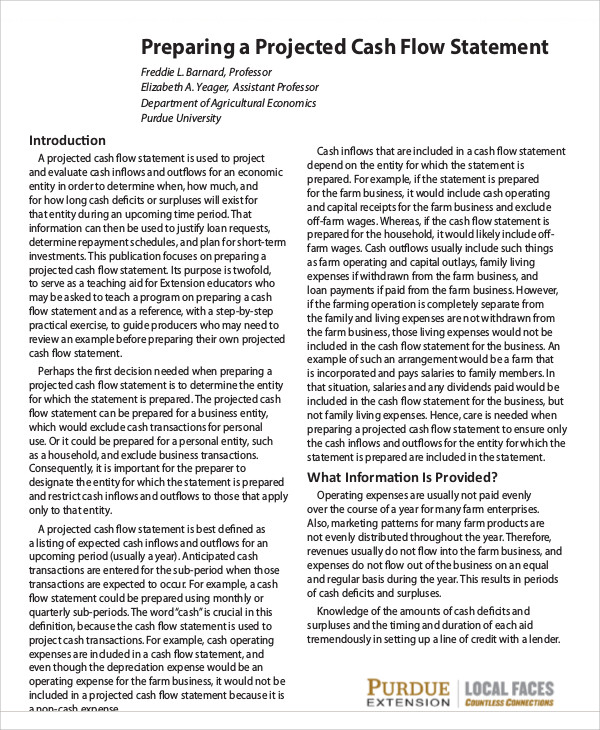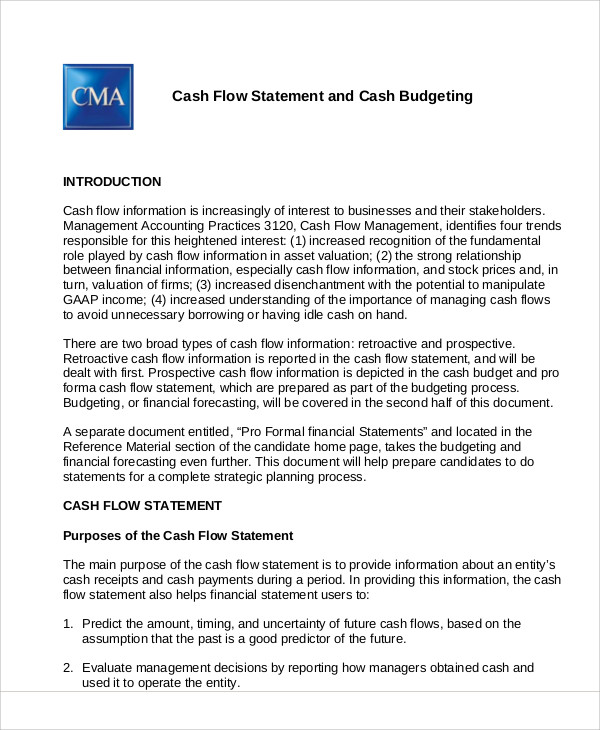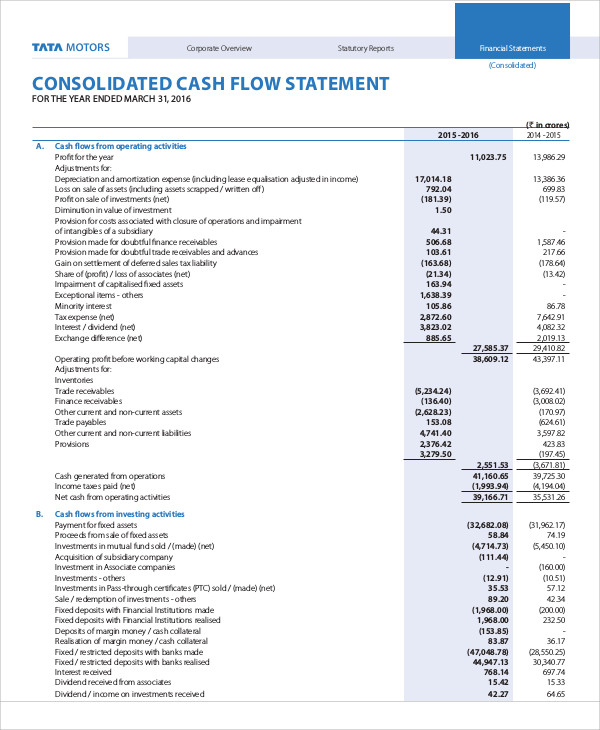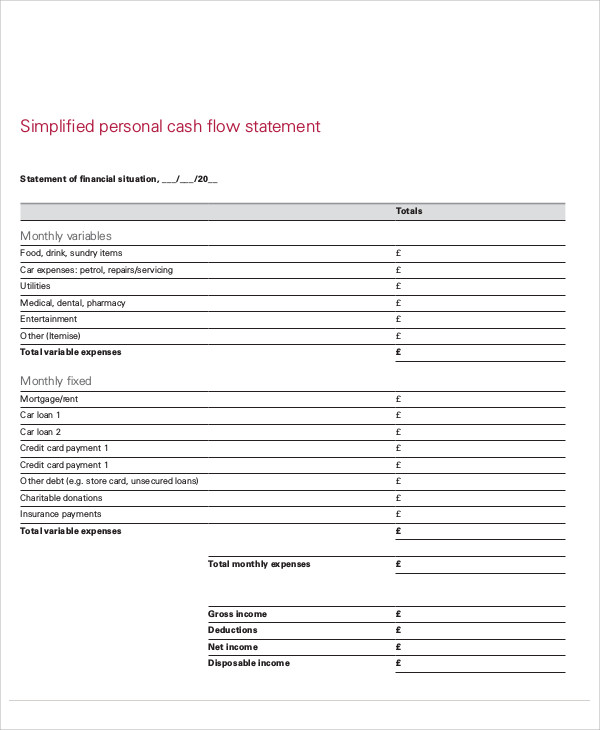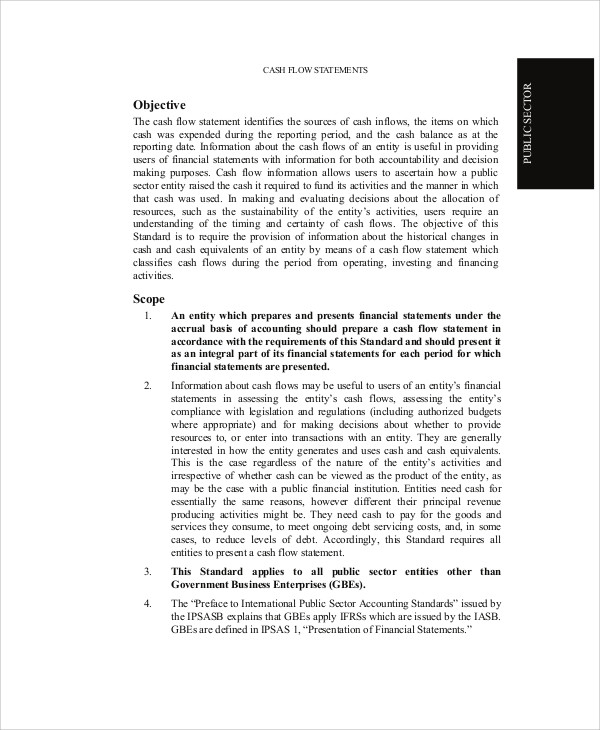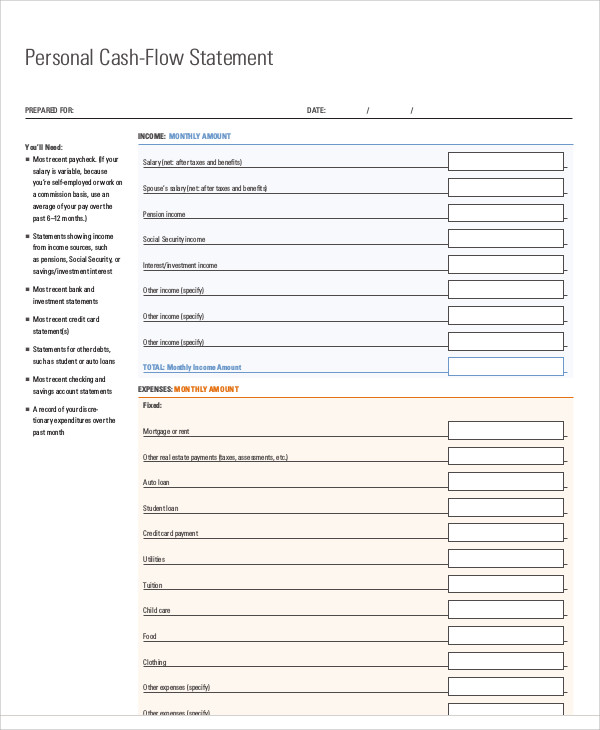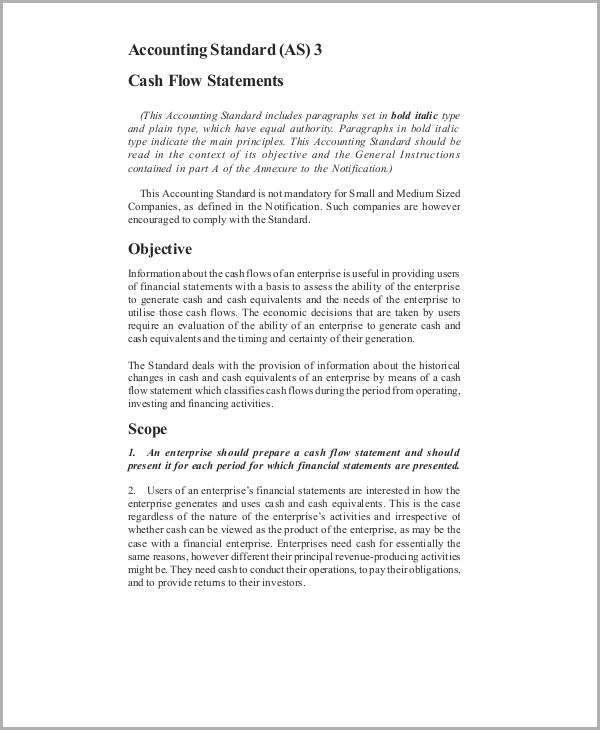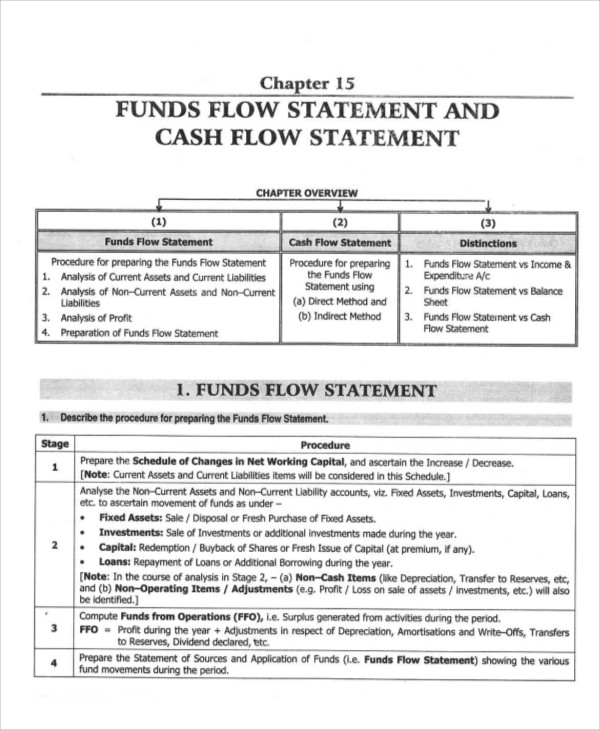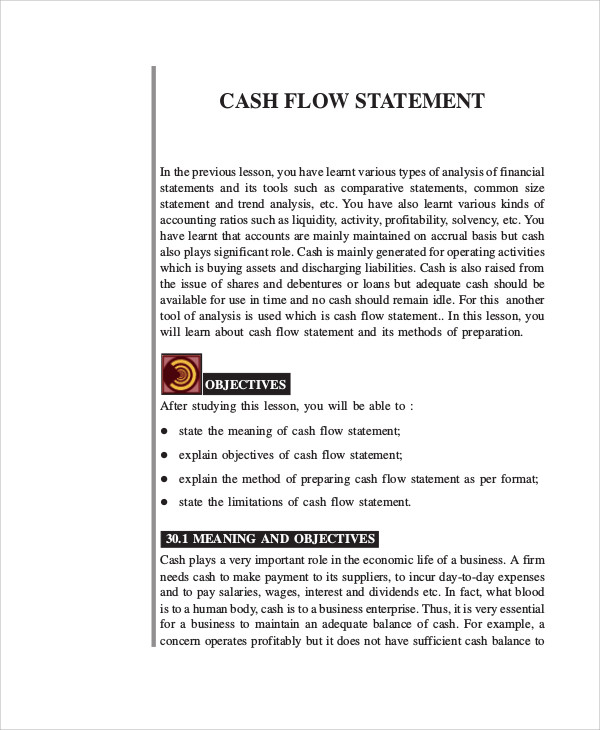Cash flow, as how the dictionary would define it as, is the total amount of money that is being transferred into and out of a business, especially as affecting liquidity. It is also sometimes referred to as flow of funds.
Perhaps looking at these Statement Samples will be able to give you details and information regarding about the subject matter. Most companies and businesses would absolutely check their respective cash flow statements from time to time since it is their indication as well as it measures their boundaries for their sales’ profit and loss.
Cash Flow Statement Template
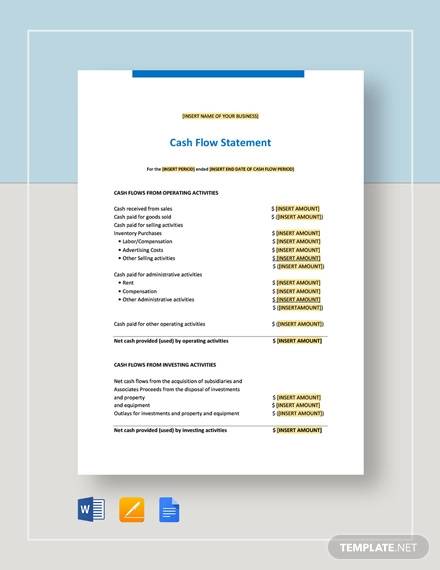
Sample Projected Cash Flow Statement
Budgeting Cash Flow Statement Example
Consolidated Cash Flow Statement in PDF
Simplified Personal Cash Flow Statement Example
Cash Flow Statement Example
You can definitely check out these Financial Statement Samples as well as examples of these Personal Financial Statements for free and which you may also find useful, especially if you are just beginning to comprehend or have a tiny grasp of understanding about what cash flow statements are essentially for and how it mainly works, and also what it does for companies and businesses. It also applies to some certain individuals who do their own personal financial statements or some people who have other sources of income, which they can include on their cash flow statements.
If you are an aspiring entrepreneur or is actually one, it is also essential to know the various types of cash flow activities or how cash goes in and out of your business. You have got to admit that the information is quite useful, unless you have come across it already.
The Different Types of Cash Flow Activities
- The Investing Activities – this type of cash flow activity can be found on the asset section of the balance sheet. It is basically generated by the tools or equipment that you have probably bought because it would generate you some income. One example included is a high-speed printer with digital color. According to cash flow grow, such investment being bought is considered to be long term and will probably stay for quite an ample of years.
Personal Cash Flow Statement
Standard Cash Flow Statement
Cash Flow and Funds Statement
Cash Flow Balance Statement
- The Operating Cash Flow – this is the type of cash flow activity that can be found on the income statement of your balance sheet. It is basically the cash or the money that you have directly or indirectly received from your customers minus the expenses from your liabilities either on a monthly basis, per daily basis, or on an annual basis.
- The Financing Activities – this is the type of cash flow activity that can be found on the liability and the equity section of the balance sheet. Here you can see how the overall or the general cash flow is being affected by the increasing and the decreasing of the equity. According to cash flow grow, it some cases this can be deceiving if you are seeing it on either the good or the bad perspective.
Moreover, aside from all those given details, you can also check out some Sample Profit Loss Statements, which are amazingly helpful and easy to comprehend, especially if you are a newbie to the finance industry and do not have the slightest idea on how to go about some particular things.
Related Posts
FREE 10+ Marketing Problem Statement Samples [ Strategy, Digital, Social Media ]
FREE 10+ Medical Problem Statement Samples [ Surgical, Nursing, Management ]
FREE 10+ Payoff Statement Samples in PDF | DOC
FREE 10+ Scholarship Statement of Purpose Samples in PDF | DOC
FREE 10+ Engineering Problem Statement Samples [ Software, Mechanical, Civil ]
FREE 30+ Information Statement Samples in PDF | MS Word
FREE 50+ Policy Statement Samples in MS Word | Google Docs | PDF
FREE 50+ Summary Statement Samples in PDF | MS Word
FREE 10+ Nursing School Personal Statement in PDF
FREE 9+ Mortgage Statement Samples and Templates in PDF
FREE 10+ Independent Subcontractor Statement Samples in MS Word | Google Docs | Apple Pages | PDF
FREE 10+ Trust Distribution Statement Samples in PDF
FREE 14+ Compliance Statement Samples & Templates in PDF | MS Word
FREE 10+ Extension Impact Statement Samples in PDF | DOC
FREE 10+ Diversity Mission Statement Samples in MS Word | PDF

